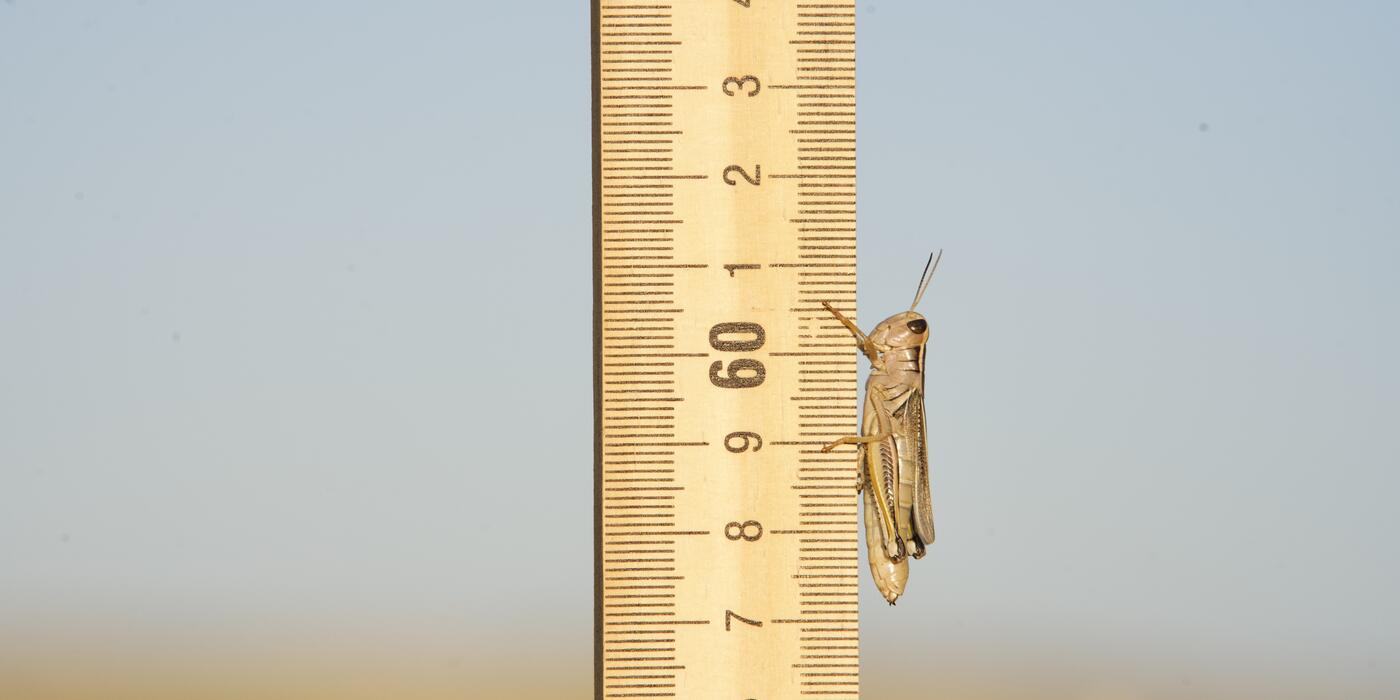Tracking Backpacks for Tiny Falcons
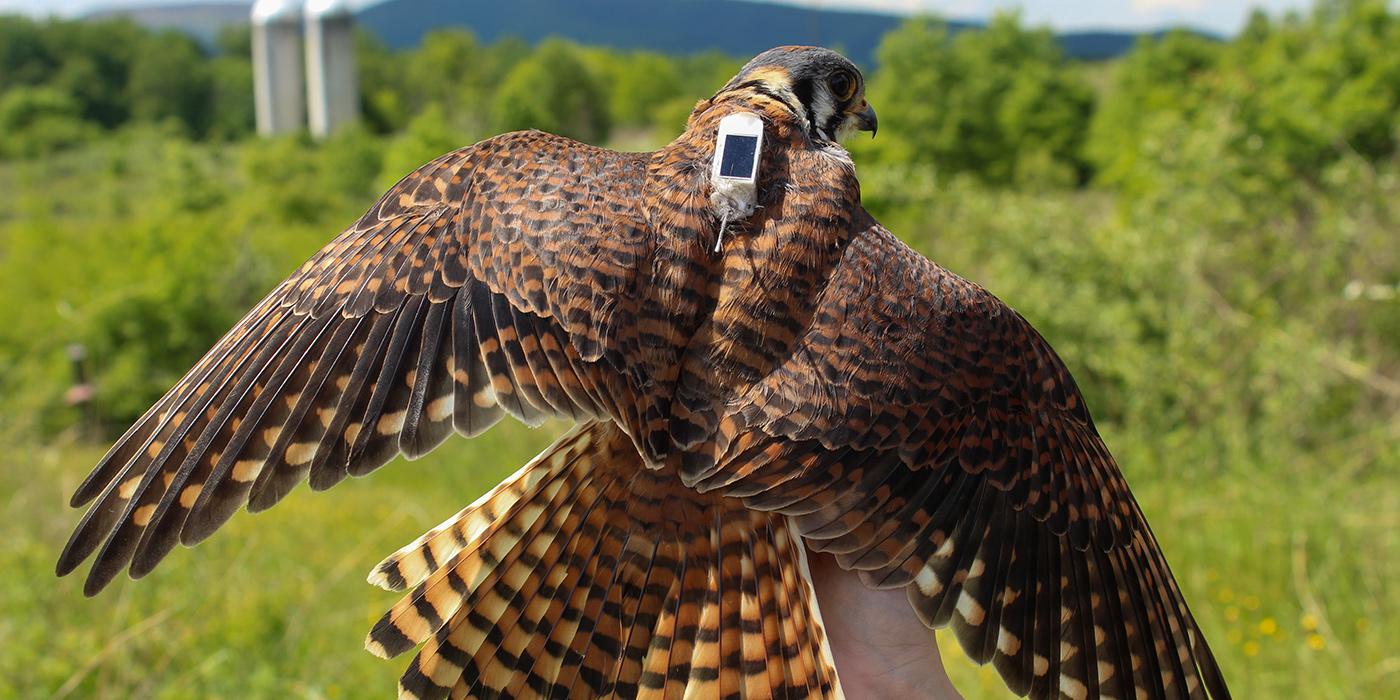
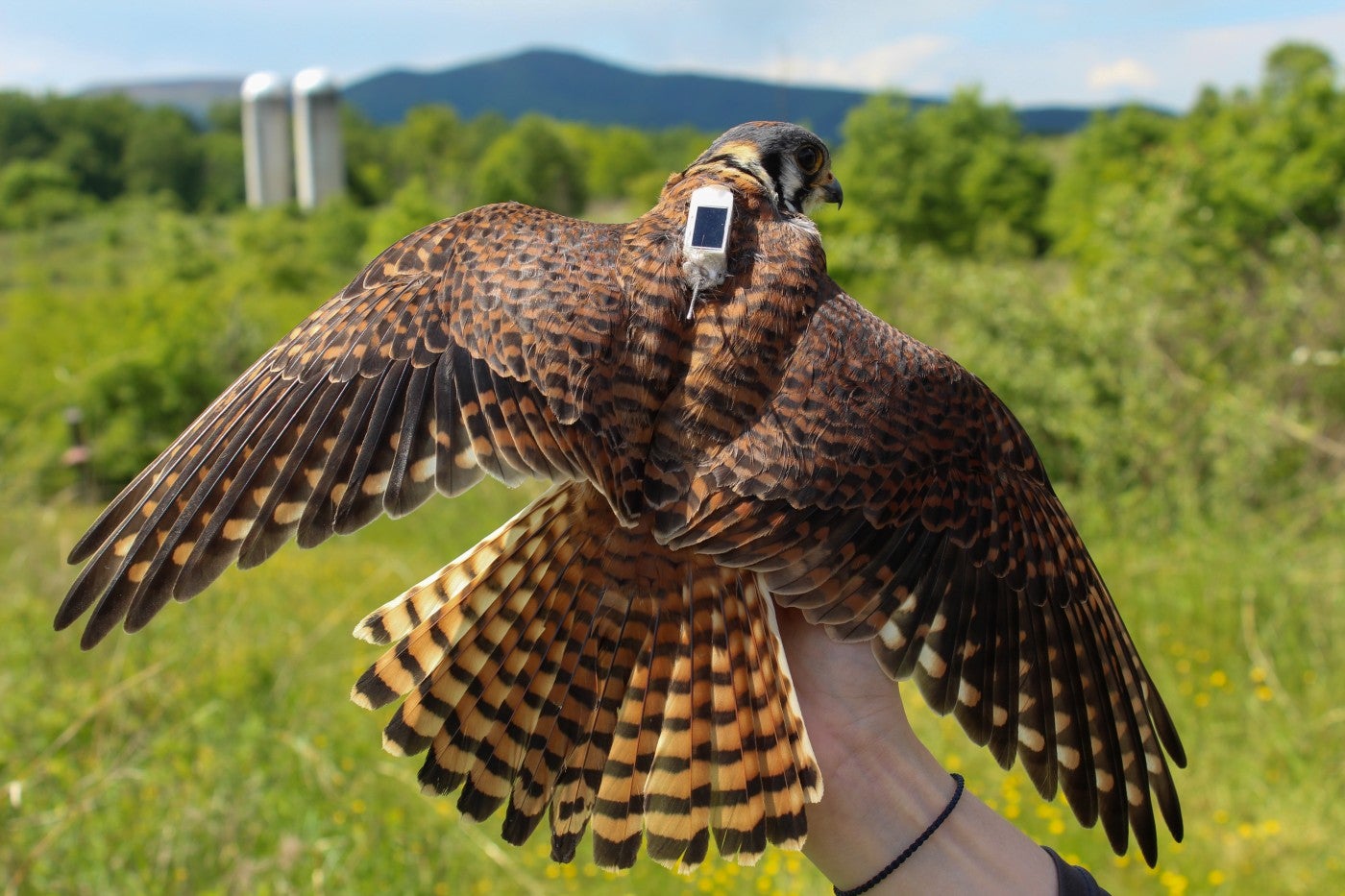
Not all heroes wear capes, some wear GPS-enabled backpacks and have feathers.
Joe Kolowski is a wildlife ecologist and animal tracking expert with the Smithsonian Conservation Biology Institute and the Smithsonian-Mason School of Conservation. He leads a remarkable project to study the breeding ranges of kestrels by fitting them with tiny tracking backpacks. This understanding can improve land use, protections and conservation for kestrels.
In this Q&A, Kolowski explains the purpose and process of tracking these winged heroes.
Q: What exactly are kestrels?
A: Kestrels are amazing, charismatic, colorful little birds, with russet-orange backs, gray heads and distinctive facial markings. The males have striking blue-gray wings. They’re tiny, for a raptor — bigger than a blue jay but smaller than a pigeon. Kestrels are the smallest falcon and the smallest bird of prey in North America.
There is a fair amount of evidence that the North American kestrel population has been slowly declining since the 1960s or 1970s, but there haven’t been any clear-cut conclusions about why that might be. Our research hopes to help change that.
Q: Where do kestrels live?
A: Kestrels live across North America, in a variety of primarily open habitats. One key thing that might be affecting kestrels is human development of their preferred habitats, which appear to be a mix of forest edge and fields.
These birds are cavity nesters. Traditionally, they nest in abandoned tree cavities made by other species, like large woodpeckers. But tree cavities are hard to come by in agricultural landscapes cleared for crops.
Over the years, people have put up nest boxes for kestrels, which they will readily use. There are also nest box programs all around the country that really allow anyone to support the kestrel population, and to help scientists monitor and study them more easily.
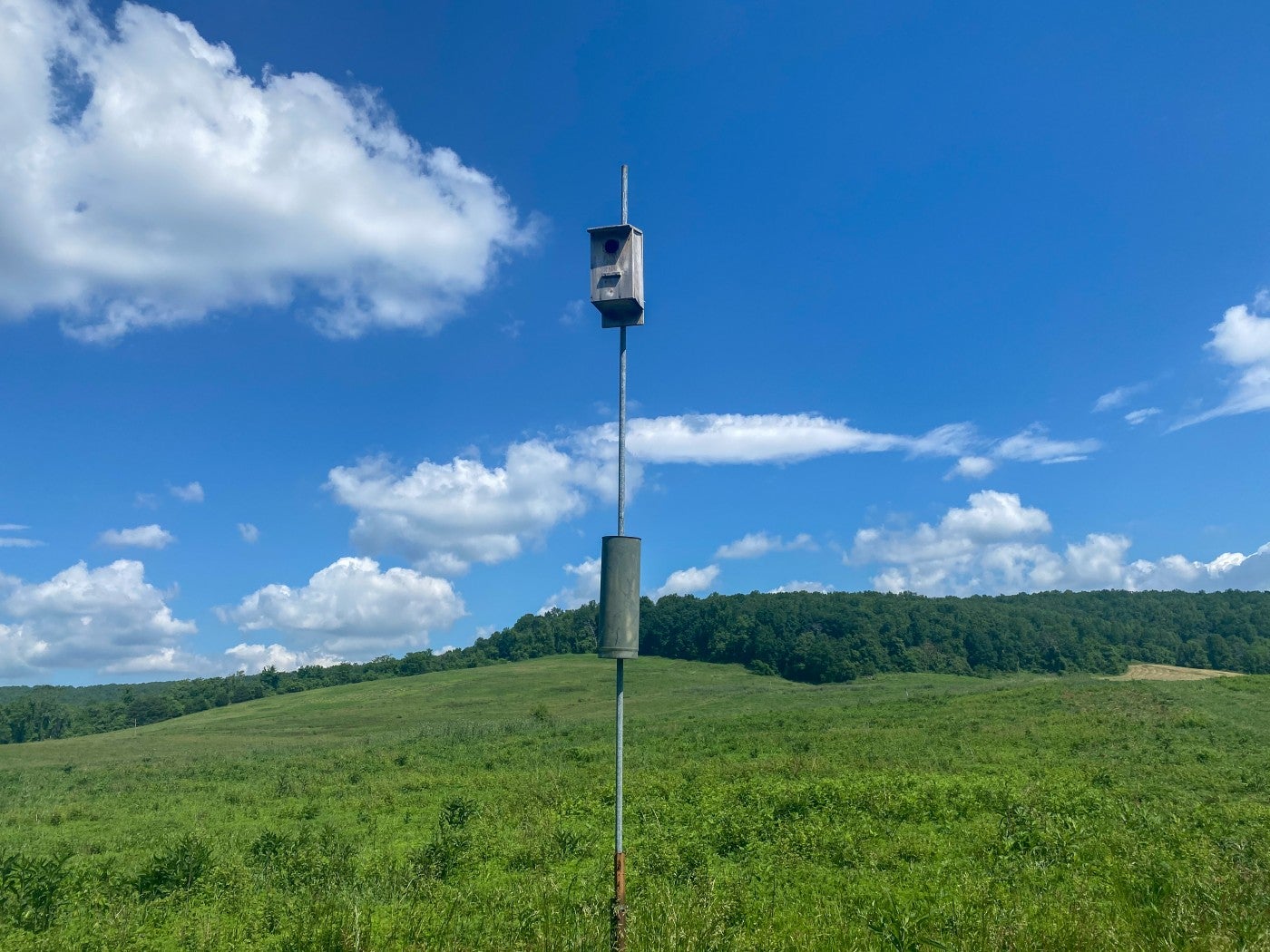
Q: What are you studying?
A: To help protect kestrels, we need to know where the birds spend their time. Currently, we have no idea where they prefer to hunt. Do they prefer hay fields or cattle pastures, for example?
There are nest boxes in places where people have established pollinator meadows. Do kestrels prefer those to farmed land? How far from their nest boxes do they go to hunt, and does that change when the hay fields are cut or as the meadows grow taller?
We want to help manage the land that’s available and make recommendations to landowners on how best to support kestrels. For now, we don’t know much about what kestrels need, other than just open space.
Q: How are you studying the birds?
A: Because kestrels are small, there really haven’t been tracking units scientists could put on the birds to collect this kind of data — until now.
We’re working with a company in Europe that makes tracking devices for animals. We have these tiny devices, loggers, that we fit on the kestrels like backpacks.
They’re miniscule. They weigh 3.5 grams (0.12 ounces, or between two and three paperclips). They have tiny little solar panels, so they can charge themselves, and tiny little antennas to record and transmit the location data.
We make sure that the trackers weigh less than 3% of the kestrel’s body weight and females are heavier than males. A female kestrel weighs about 140 grams (5 ounces, or a baseball), while a male weighs closer to 105 grams. (3.7 ounces, or a small onion). So right now, we can only put the loggers on the females. We’re interested in studying the males, too – they seem to move more widely than the females – but the units aren’t small enough yet.
This is a collaborative project between the Smithsonian Migratory Bird Center, the Smithsonian-Mason School of Conservation and the Clifton Institute.
Bert Harris, of the Clifton Institute, works closely with regional landowners on sustainable land management programs and is focused on applying our results to local recommendations. We also work with Alan Williams, a raptor capture and handling expert with a particular affinity for kestrels. He works for Shenandoah National Park as an ecologist, but he’s doing the project in his free time. We also have three interns doing data collection: downloading tracking data and sampling vegetation. We also have a great group of volunteers who help us monitor a large network of nest boxes.
Q: What makes studying kestrels challenging?
Kestrels are small and fast which means they aren’t very easy to watch. You’ll see them sitting on a power line or a fence post, but once they move, they’re hard to track.
Scientists have tried to study kestrels with banding. However, no one has been able to get detailed data to be able to identify the territories they’re using when raising their young. We know where they’re nesting, but we don’t know where they’re hunting or how they’re using the landscape.
Q: Are the birds OK wearing the tracker?
A: We are very conservative with the tracker design. This type of harness has been used on a bunch of species of birds for years. It’s the same kind of harness that the Smithsonian Migratory Bird Center uses to track birds flying to South America and back. There hasn’t been any evidence that the loggers are having any effect on the birds or their behavior. These particular units have been used on European and lesser kestrels in Europe.
Q: How do you get the trackers on the birds?
We put the loggers on the females when they’re sitting on the eggs in the nest boxes toward the end of the one-month incubation period. We collect just a few points per day until the eggs hatch and the female begins leaving the box more, allowing the unit to charge fully and collect more points per day. It takes about a month for the nestlings to fledge. At this point, all our nests have been completed, and nearly all our females successfully raised their young through the fledging period, which was encouraging to see.
We suspect some of the birds in this region actually migrate and some of them stay here all year long. The tracking information has already showed us that at least at this point, toward the end of August, the vast majority of the birds are still here, most of them still in their original breeding territory.
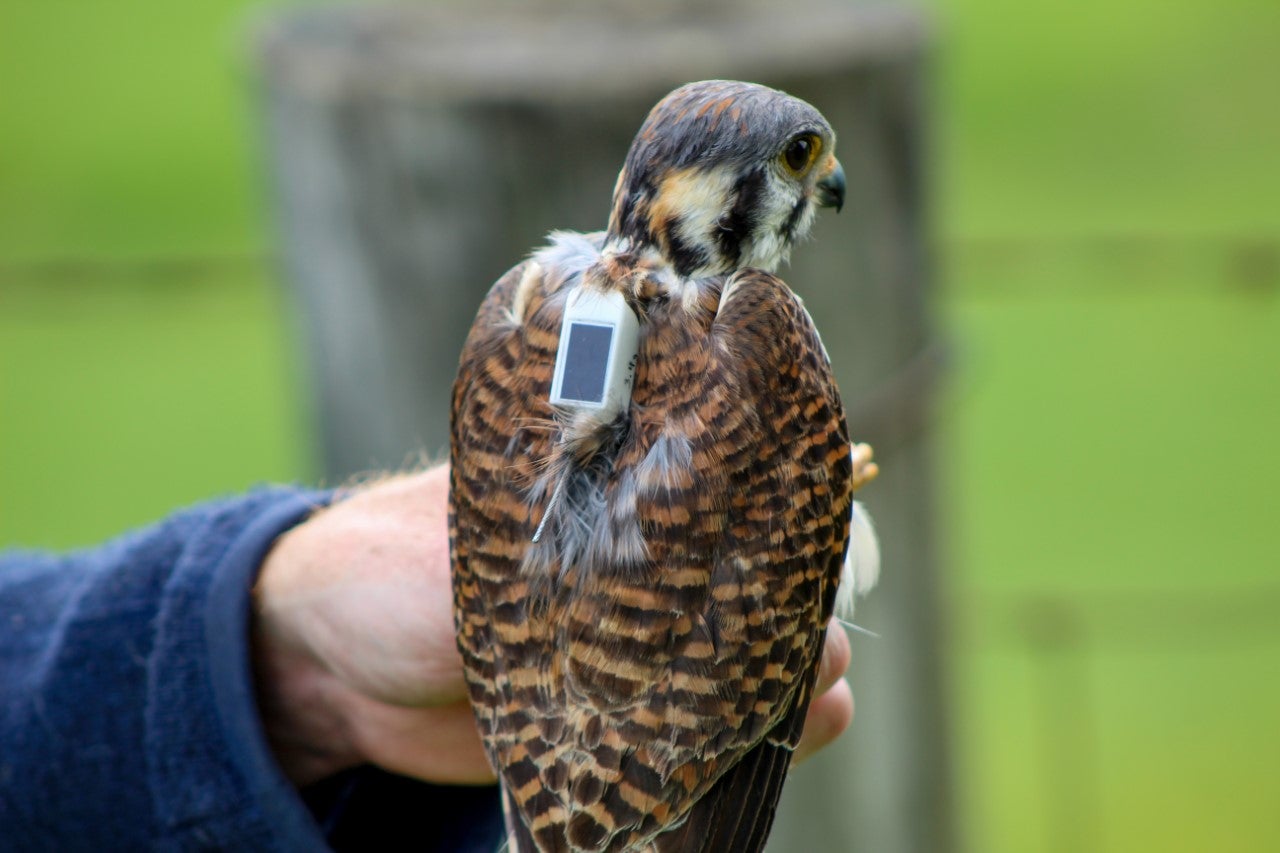
Q: How many birds are you tracking?
A: We have 19 transmitters and all have been deployed on females in Fauquier and Rappahannock counties here in Virginia.
Q: How do the loggers work?
A: The loggers run on solar power and work well in open habitats because they’re getting charged when in direct sunlight
We program the loggers to record a certain number of points per day. Each data point is a location, a GPS reading, of where the bird is.
We go out every few days to download the data. Once we get close enough to a bird (within a couple hundred meters) a program on our laptop lets us know when a small mobile antenna has communicated with the logger and downloaded data. Then we upload that data to our database. You can actually see the map of where the kestrels are spending their time on our app!
The units have worked even better than we hoped and we now have three birds that have recorded more than 3000 locations.
Q: What have the results told you so far?
A: The most exciting thing we’ve discovered is while females generally are using very small territories centered around the nest box (rarely traveling more than a few hundred meters), we’ve documented some occasional long-distance movements that are hard to explain. We’ve seen quite a few females journey up to 6 miles away from the nest box, crossing multiple other kestrel territories in the process. They do not spend much time in these new areas, quickly returning to their territories.
We don’t know for sure if they are searching for potential places to forage once the nestlings fledge, potential territories to use during next year’s breeding season or visiting areas they have used in the past that are good foraging fields. But we have seen that now that the fledglings have moved on, some of these females have shifted to new territories which they explored earlier in the summer. This movement to new territories after breeding is completed is totally new information for this species and it may indicate that their initial breeding territories were not ideal in terms of foraging habitat.
We have not yet had time to begin formally analyzing the data to identify habitat preferences. As more results come in, we will compare the GPS tracking data with what we know about the vegetation in their landscape, including mowing times and crop height. Comparing all data will show us what the birds prefer, where they like to hunt and what kind of landscape is best for attracting and protecting these amazing birds.

